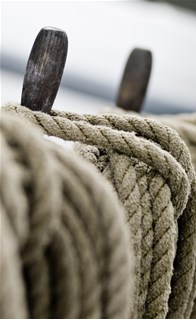|
Efficient gas and liquid interface
A high-speed cyclone (AVC = Advanced Vortex Chamber) is a vital and unique part of our EGC unit. With outstanding separation efficiency it enables our ECGS to operate with very small droplets, creating a large gas-liquid interaction surface. This is a prerequisite for achieving a high sulfur trapping efficiency at minimum cost.
Water boosted with caustic soda (50% NaOH aqueous solution) is injected in the first phase of the cleaning process followed by larger quantities of ambient sea, fresh or brackish water. This principle of adding caustic soda gives a simple regulation mechanism versus the required cleaning efficiency expressed by the SO2 (ppm)/CO2 (%) content of the cleaned exhaust gas. Further, it allows the system to operate in all types of water in either open or closed loop modes.
Integrated multi-streaming
Two fans and a gas recirculation mechanism is integrated in the EGC. This ensures that pressure at the common gas meeting point is maintained at ambient level irrespective the amount of exhaust fed to the system. This feature allows all exhaust sources onboard to be served by one common EGC unit without encountering an increase in back pressure.
Installation of EGCS
The integrated multi-stream features allow the common EGC unit to be sized according to highest practical gas production onboard. The simultaneous production is less than the theoretical amount produced if all exhaust sources were operated at full capacity. Hence, the Clean Marine EGCS is designed to economize on resources (piping, water and power).
The installation is also very cost-efficient for vessels with many exhaust sources as the one EGCS unit simultaneously serve all combustion units. When retrofitting an EGC unit, this may be done adjacent to an existing funnel or inside an enlarged funnel. For a new build ship, the builder will generally incorporate the EGCS into the ship design, with the EGC unit located inside the funnel. Clean Marine provides all necessary expertise and assistance including naval architects who produce documentation required by class and yards, and personnel who supervise installation and does commissioning.
|
The Clean Marine product




